
Empididae is a family of flies with over 3,000 described species occurring worldwide in all the biogeographic realms but the majority are found in the Holarctic. They are mainly predatory flies like most of their relatives in the Empidoidea, and exhibit a wide range of forms but are generally small to medium-sized, non-metallic and rather bristly.

Gabriel Strobl was an Austrian Roman Catholic priest and entomologist who specialised in Diptera.

Hilara is a genus of dance flies, in the fly family Empididae.

Hilara maura is a species of dance fly, in the fly family Empididae.

Empis ciliata, the black dance fly, is a species of dance fly, in the fly family Empididae. It is included in the subgenus Euempis.
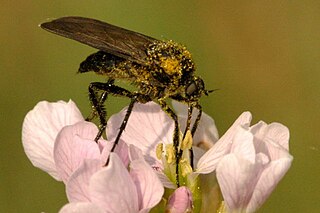
Empis tanysphyra is a species of dance flies, in the fly family Empididae. It is included in the subgenus Empis. It is found in most of central and southern Europe.
H. intermedia may refer to:
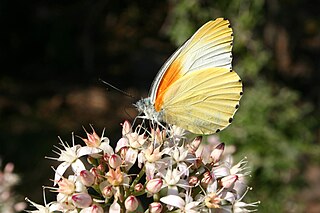
Mylothris, commonly called dotted borders, is a genus of pierid butterflies found in Africa.
Milan Chvála was a Czech entomologist who specialised in Diptera.
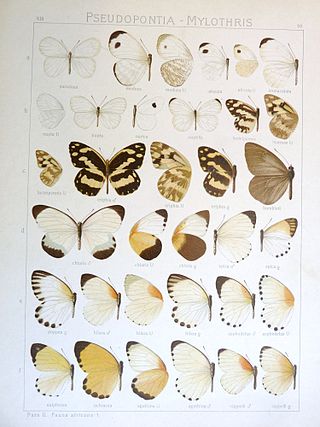
Mylothris hilara, the hilara dotted border, is a butterfly in the family Pieridae. It is found in Guinea, Ivory Coast, Nigeria, Cameroon, Equatorial Guinea, the Republic of the Congo, the Democratic Republic of the Congo, Uganda and Kenya. The habitat consists of submontane forests and lowland forests.

Upper Wye Gorge is a Site of Special Scientific Interest (SSSI), noted for its biological and geological characteristics, around Symonds Yat in the Wye Valley on the Wales–England border. The site is listed in the "Forest of Dean Local Plan Review" as a Key Wildlife Site (KWS).
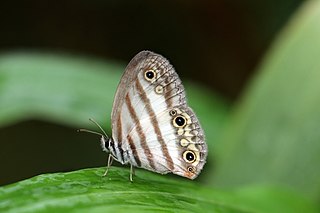
Euptychia is a genus of satyrid butterflies found in the Neotropical realm. The genus was erected by Jacob Hübner in 1818.
Afrasura peripherica is a moth of the subfamily Arctiinae first described by Embrik Strand in 1912. It is found in Cameroon, the Democratic Republic of the Congo, Kenya, Rwanda and Uganda.
Dysschema hilarum is a moth of the family Erebidae first described by Weymer in 1895. It is found in Brazil.

Empidinae, also called dance flies, are a subfamily of empidoid flies. They are mainly predatory flies like most of their relatives, and generally small to medium-sized. Most species are flower visitors and they can be effective pollinators.
Kalain is situated in a strategic location of the Cachar district of Assam, India. It is about 28.5 kilometres (17.7 mi) from the district headquarters, Silchar, and is called the Gateway to Barak Valley. There are three railway stations that connect Kalain smoothly to rest of the valley and the state of Assam; one at Hilara, one at Sukritipur. and one at Bihara
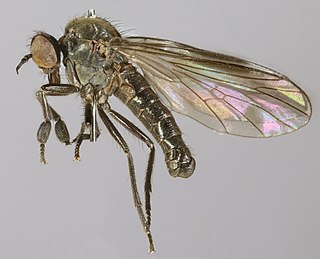
Hilara brevistyla is a species of fly in the family Empididae. It is found in the Palearctic.
Empis kerteszi is a species of fly in the family Empididae. It is included in the subgenus Euempis. It is found in the Palearctic.
Empis adriani is a species of fly in the family Empididae. It is included in the subgenus Xanthempis. It is found in the Palearctic.
Hilara laureae is a species of dance flies, in the fly family Empididae. The species was first described from Tenerife in the Canary Islands by Theodor Becker, where it is believed to be endemic.










